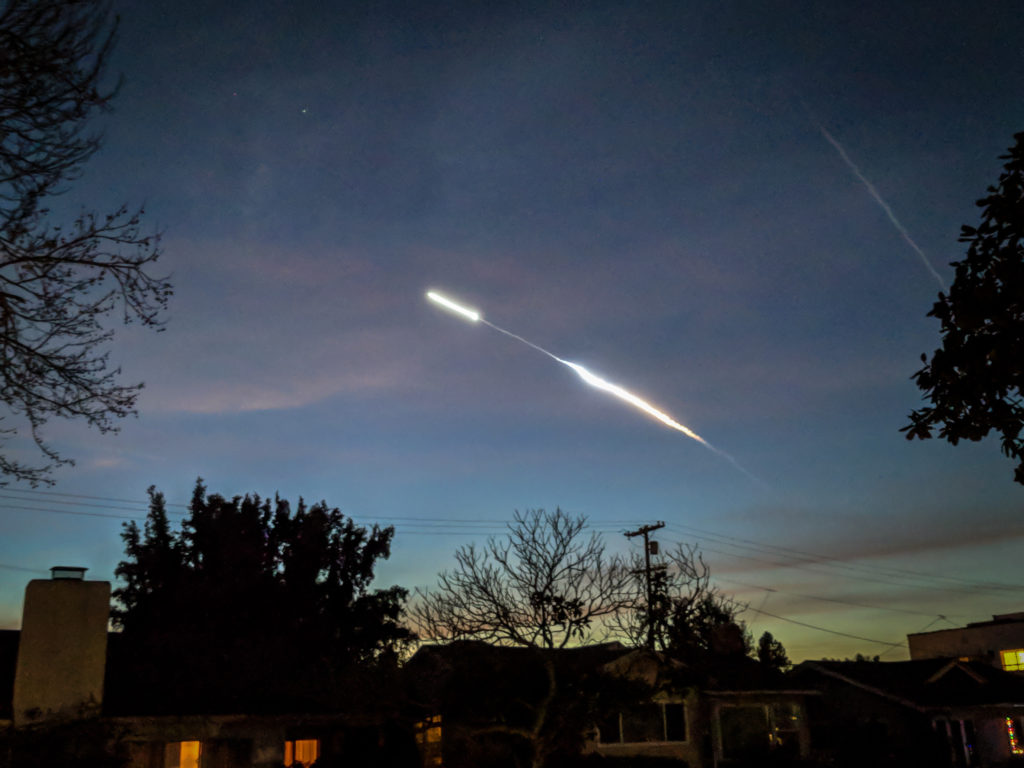On Thursday evening, October 27th, SpaceX launched a Falcon 9 with 53 Starlink satellites from Vandenburg Space Force Base. This 6:14pm PDT launch was at just the right time to provide a spectacular view from the ground. It was dark enough to see the rocket in flight and it moved into the sunlight which highlighted the plume in the dark sky.
I got out my handy Sony RX-100 Mark 5 and set it up on a tripod. After a little fumbling around, I got the connection to the smart phone working. Sony has a decent app that you can use to control the camera from a mobile device. No cable releases needed.
This first image shows the Falcon 9 toward the end of the first stage burn.

The second image was taken after main engine cut off (MECO), stage separation, and second stage start up. The rocket is clearly in the sunlight.

The third image is the most dramatic. The exhaust plume is expanding as the second stage gets farther into the vacuum of space. The two dots behind the second stage are the fairing halves and the dot behind them is the first stage. Click on the image to get a full-sized version.

This wider-framed image shows the second stage speeding on with the long exhaust plume behind it. Note the crescent Moon toward the bottom of the frame.

The lingering exhaust lights up the sky.















You must be logged in to post a comment.